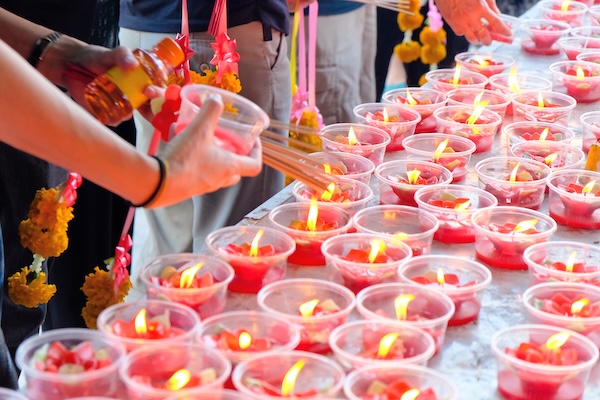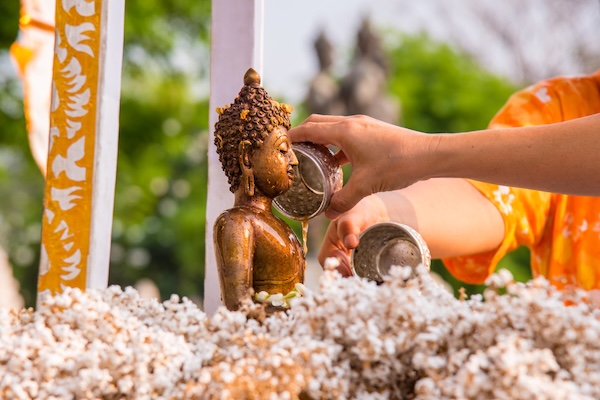Ever seen the year 2568 on a document in Thailand and thought you’d time-traveled? You haven’t. You’ve just encountered the Thai solar calendar, which is 543 years ahead of the Gregorian calendar.
This guide will simply explain why Thailand has a different year, how to convert the dates, and how it impacts your travel. No more confusion, guaranteed.
How to Convert Thai Dates to Gregorian (and Vice Versa)
Converting dates is the most common question travelers have. It’s actually very simple.
To convert a year from the Gregorian calendar (like 2025) to the Thai Buddhist calendar, just add 543. That means 2025 becomes 2568 B.E..
To convert from a Thai year back to a Gregorian year, simply subtract 543.
✅ Beware: Some travelers confuse the two and enter the wrong format on documents. You may see wild mistakes like “0256”. Always confirm whether the form asks for B.E. or C.E. format.
Thai Solar Calendar vs. Lunar Calendar: What’s the Difference?
Thailand officially uses two main calendars, each with a distinct purpose.

The Thai Solar Calendar (The Official One)
In 1888, King Rama V introduced the solar calendar in Thailand, drawing inspiration from the Gregorian model. It wasn’t until 1941 that January 1st officially marked the start of the year. However, instead of the Common Era (C.E.), it follows the Buddhist Era (B.E.), which is always 543 years ahead.
This is the calendar you’ll see on official documents, in schools, and for business contracts. For instance, the year 2025 becomes 2568 B.E., often written with Thai numerals: ๒๕๖๘.
The Thai Lunar Calendar (The Traditional One)
The Thai lunar calendar is a luni-solar system deeply rooted in Buddhism. It tracks moon phases and is essential for determining religious events like Makha Bucha, Visakha Bucha, and Asalha Bucha. Temples organize rituals based on this calendar, and many Thai families use it to choose auspicious dates for weddings or other milestones.
🕯️ Events such as the Ubon Ratchathani Candle Festival follow this lunar system, especially during observances like Khao Phansa, the start of Buddhist Lent.
Thai vs. Western Calendars: A Quick Comparison
Here’s a side-by-side comparison of the Gregorian, Thai solar, and Thai lunar calendars:
| Element | Gregorian | Thai Solar | Thai Lunar |
|---|---|---|---|
| Current Year | 2025 | 2568 B.E. | Varies |
| Starting Point | Birth of Jesus | Death of Buddha | Moon cycles |
| New Year | January 1 | January 1 | Changes yearly (Songkran) |
| Usage | Global standard | Government & legal documents | Religious ceremonies |

Key Thai Holidays You Should Know
The Thai calendar dictates many of the country’s most important holidays:
- Songkran (April 13–15): The traditional Thai New Year celebration.
- Makha Bucha: A Buddhist holiday on the full moon of the third lunar month (usually February or March).
- Visakha Bucha: Celebrates Buddha’s birth, enlightenment, and death on the full moon of the sixth lunar month (usually May).
- Other key dates include King’s Birthday, National Day, and Constitution Day.
📍 Take note: During religious holidays, alcohol sales are restricted, and nightlife venues may close temporarily.
The Thai Calendar in Everyday Life: Where You’ll See It
Most Thai schools operate on the solar calendar, starting in May. However, holidays and local events often follow the lunar calendar.
Documents like birth certificates, driver’s licenses, or visa papers usually only mention the B.E. year. So if you see “expiry: 2569” on a visa—it’s totally normal!
Many Thai people also rely on astrology tied to the lunar system, picking favorable days to get married, move house, or start a new venture.
FAQ about the Thai Calendar
Why does Thailand have more than one New Year?
Thailand observes three different New Year events: the official one on January 1st, the traditional Songkran festival in April, and Chinese New Year, which follows the lunar calendar and varies each year.
What is a Buddhist year exactly?
It’s calculated from the death of the Buddha, which is believed to have occurred 543 years before the start of the Gregorian calendar. So, 2025 + 543 = 2568 B.E.
How do I know if a Thai year is B.E. or C.E.?
If the number is above 2500, it’s almost certainly B.E. The context is also a key indicator: official Thai documents, contracts, and government websites use the Buddhist system.
📖 Final Thoughts
Understanding the Thai calendar gives you a real edge—whether you’re traveling, relocating, or just curious about Thai culture. Once you get the hang of adding or subtracting 543, you’ll appreciate how beautifully it connects Thailand’s past and present, tradition and modernity.
🔄 Last updated on October 6, 2025
